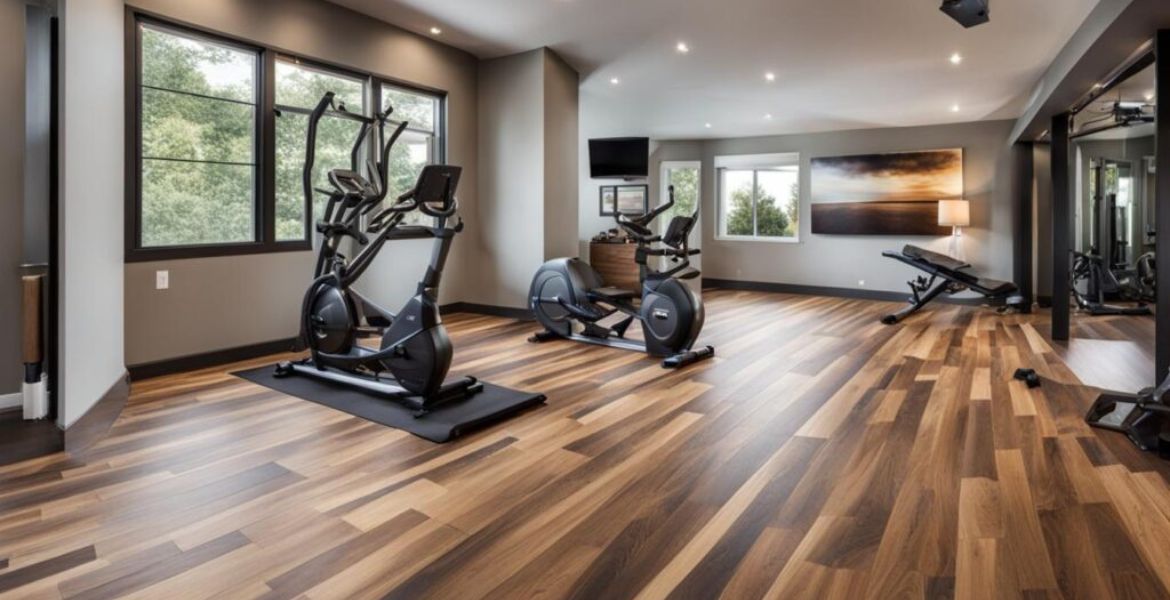
Gym Flooring play a critical role in ensuring the safety, performance, and overall experience of gym-goers. The right flooring must provide durability, shock absorption, slip resistance, and ease of maintenance to handle the demands of various physical activities.
Recommended Types of Gym Floors.
Rubber flooring is widely regarded as one of the safest options for gyms due to its numerous protective qualities.
Rolled Rubber Flooring: Ideal for covering large areas with minimal seams, providing a smooth and continuous surface. It offers excellent shock absorption, reducing the impact on joints and muscles.
Rubber Tiles: Interlocking tiles are easy to install and replace, making them a practical choice for gyms. They offer good traction and are slip-resistant, even when wet.
Rubber Mats: These are perfect for areas with heavy equipment or high-impact activities. They can be moved as needed to provide extra cushioning and protection where required.
>Foam Flooring
Foam flooring provides a soft and cushioned surface, making it suitable for areas where floor exercises, yoga, and martial arts are practiced.
Interlocking Foam Tiles: These tiles are easy to install and offer a comfortable surface that helps reduce fatigue and the risk of injuries.
Foam Rolls: Used to cover larger areas, foam rolls provide a seamless and cushioned surface ideal for temporary setups or specific zones within a gym.
Vinyl flooring is durable and offers a range of design options while providing a safe surface for gym activities.
Vinyl Rolls: Provide a seamless and slip-resistant surface that is easy to clean and maintain. They are suitable for multipurpose areas in gyms.
Vinyl Tiles: Durable and easy to replace, these tiles can mimic various textures and patterns, providing both functionality and aesthetic appeal.
Hardwood flooring is commonly used in basketball courts and dance studios due to its performance characteristics and classic look.
Maple Hardwood: Known for its durability and shock absorption, maple hardwood is a preferred choice for sports courts, offering a stable and safe surface.
Engineered Hardwood: Offers similar aesthetics with enhanced stability and moisture resistance, making it suitable for gym environments.
>Carpet Tiles
Carpet tiles provide a soft and cushioned surface ideal for cardio and weight training areas.
Nylon Carpet Tiles: Durable and stain-resistant, these tiles offer a comfortable and slip-resistant surface that can handle heavy foot traffic.
Polypropylene Carpet Tiles: Cost-effective and moisture-resistant, suitable for various gym areas while providing good traction and comfort.
>Polyurethane Flooring
Polyurethane flooring is a seamless and resilient option often used in multipurpose sports facilities.
Poured Polyurethane: Creates a smooth and continuous surface that is durable and easy to maintain. It offers excellent shock absorption and slip resistance, making it a safe choice for various activities.
Polyurethane-Coated Hardwood: Combines the natural look of wood with the durability of a polyurethane coating, providing a safe and attractive flooring solution.
Benefits of Gym Floors.
>Shock Absorption
The primary benefit of gym flooring is its ability to absorb shock, which reduces the impact on athletes’ joints and muscles. This is crucial for preventing injuries, especially in high-impact activities such as weightlifting, running, and aerobics. Rubber and foam floors are particularly effective in providing excellent shock absorption, ensuring a safer workout environment.
>Slip Resistance
Gym floors must provide a stable and slip-resistant surface to prevent accidents. Rubber, vinyl, and carpet tiles are particularly effective in offering good traction, even when the floor is wet. This reduces the likelihood of slips and falls, making these materials ideal for areas prone to moisture, such as near drinking stations and cardio equipment.
>Durability and Resilience
Gym floors need to withstand heavy equipment, constant foot traffic, and rigorous activities. Materials like rubber, vinyl, and hardwood are chosen for their durability and resilience. These floors resist wear and tear, ensuring they remain functional and attractive over time. They also protect the subfloor from damage, extending the life of the entire flooring system.
>Hygiene and Maintenance
Easy-to-clean surfaces are essential in gyms to maintain hygiene and prevent the buildup of bacteria and odors. Rubber and vinyl floors are non-porous and resist moisture, making them simple to clean and disinfect. Foam and carpet tiles, while providing comfort, may require more frequent cleaning to maintain their appearance and hygiene.
>Noise Reduction
Noise reduction is another important aspect of gym flooring. Rubber and foam floors are excellent at dampening sound, reducing noise from dropped weights and high-impact activities. This creates a more pleasant environment for gym-goers and reduces disturbances in adjacent areas.
- High Quality Products
- Expert Installation Services
- Exceptional Client Service
